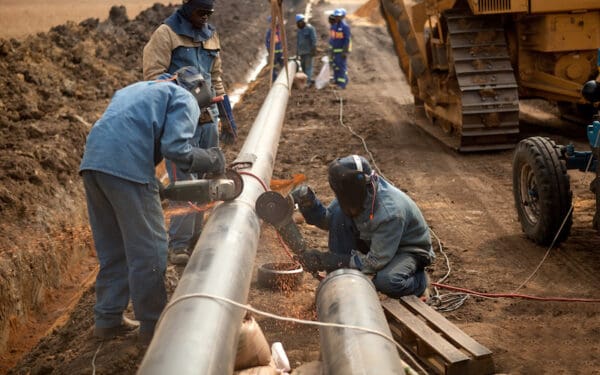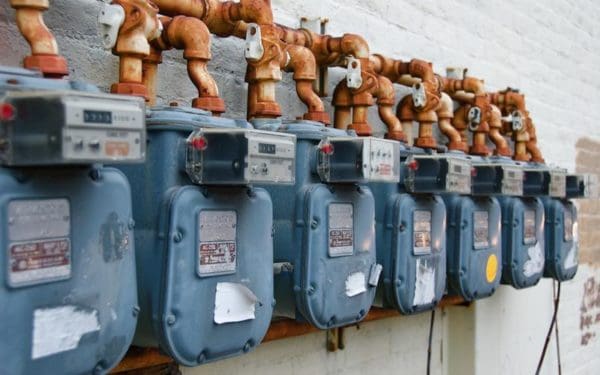Since an article appeared in the Providence Journal on July 11 saying that the proposed start-up date of the Invenergy plant has been postponed, I have heard from many CLF supporters asking questions about the delay and what it means. Here are answers to the most frequently asked questions.
What exactly was reported in the Providence Journal?
The Journal reported a one-year delay in the proposed start-up date for the Invenergy diesel oil and fracked-gas power plant. When Invenergy filed its original permit application with the Rhode Island Energy Facility Siting Board on October 29, 2015, the company promised that both of its two turbines, totaling 997 megawatts of power, would be up and running on June 1, 2019. In a filing that Invenergy made with the Siting Board on July 3, 2017, the company admitted that it would be ready with only one turbine of 485 megawatts, and that its proposed start date would now be a year later, June 1, 2020.
Was CLF surprised by this news?
No. We have known for almost a year that Invenergy could not be up and running by June 1, 2019. It takes a minimum of 2½ years to build a power plant like the one proposed by Invenergy. Thus, in order for the plant to be on line on June 1, 2019, Invenergy would have had to have had shovels in the ground no later than January 2017. However, as of this writing, July 2017, the Siting Board has not even started the Final Hearing on the proposal, much less granted a permit.
The Journal article talks about the ISO “auction.” What is that, and how does that affect Invenergy?
Once a year, the New England grid operator, ISO-New England, conducts a so-called “Forward Capacity Auction” to procure electricity for the future. The results of these auctions are a good way to tell whether or not a power plant is needed. In February 2016, the ISO’s Forward Capacity Action-10 showed that the Invenergy plant is not needed. A year later, in February 2017, FCA-11 again showed that the Invenergy plant is not needed.
So if Invenergy has this legal “Capacity Supply Obligation” to be providing 485 MW of electricity to the ISO starting on June 1, 2019, what is going to happen?
In addition to the annual Forward Capacity Auction, the regional grid operator also runs “Annual Reconfiguration Auctions” in which power generators can buy, sell, and trade their supply obligations. In May, ISO-New England published the results of the first Annual Reconfiguration Auction for the 2019–2020 period. Those published results showed that Invenergy had sold out of its 485 MW capacity supply obligation for the 2019–2020 period. That is why Invenergy told the Siting Board that its new start date would be June 1, 2020 (instead of June 1, 2019).
Why did Invenergy sell its Capacity Supply Obligation in the annual reconfiguration auction?
Invenergy did not want to sell out of its supply obligation; it was forced to do so. When Invenergy filed its permit application with the Siting Board on October 29, 2015, the company honestly believed that it would have a permit in hand by December 2015, begin construction in early 2016, and have a fully operational power plant on June 1, 2019. However, Invenergy did not count on vigorous legal opposition from CLF and the Town of Burrillville. Those legal battles forced Invenergy to sell out of its Capacity Supply Obligation because the litigation has seriously delayed the entire process.
Do the results of the Annual Reconfiguration Auction tell us anything about whether the Invenergy plant is needed?
Yes, very much so. Before Invenergy could even be allowed by ISO-New England to participate in the reconfiguration auction, the regional grid operator had to determine that there was no reliability risk to the grid from the proposed power plant not being on line. The fact that Invenergy’s second turbine did not clear the auction in either of the two most recent Forward Capacity Auctions shows that it is not needed by ISO-New England. And the fact that Invenergy was allowed to trade out of its Capacity Supply Obligation for its first turbine for the 2019–2020 period shows that even its first turbine is not needed for that period.
In short, the results of the ISO’s just-completed Annual Reconfiguration Auction is yet additional proof that neither of Invenergy’s two turbines are needed for the reliability of the New England electricity grid.
But Invenergy only sold out of its Capacity Supply Obligation for one year. Invenergy still has an obligation to provide electricity starting on June 1, 2020. Doesn’t that show that Invenergy will be needed in the future?
No. With each additional passing year, Invenergy is needed less and less. That is because the New England states are collectively acquiring significant quantities of new renewable energy resources. These include (but are not limited to) unexpectedly large amounts of rooftop solar and energy efficiency that is already on line, in addition to the Massachusetts mandate to obtain 1200 MW of new hydropower from Canada plus 1600 MW of offshore wind. (Compare that the Invenergy’s present capacity supply obligation of only 485 MW.)
Invenergy argues that it sold its Capacity Supply Obligation to one or more other generators, and that this shows that those 485 MW are needed by the ISO. What is your response to that?
The only issue before the Rhode Island Energy Facilities Siting Board is whether or not Invenergy should get a permit, not whether some plant(s) somewhere else in New England are or are not needed. The Energy Facility Siting Board is not the New England grid operator (that is ISO-New England’s job). And in order for Invenergy to be allowed by the ISO to sell out of its Capacity Supply Obligation in the Annual Reconfiguration Auction, there had to be an explicit finding by the ISO that the electricity from Invenergy is not needed for system reliability.
Whether or not Invenergy is needed is a crucial question. The core of Invenergy’s argument about why the Siting Board should approve its permit application is that the ISO needs the electricity from the plant. The core of CLF’s argument about why the Siting Board should deny the permit application is that the ISO does not need Invenergy at all. And the newly published results of the Annual Reconfiguration Auction show that Invenergy is wrong and CLF is right.
Remember what Invenergy told the Siting Board on October 29, 2015, when filing its original permit application: “The ISO needs Invenergy starting June 1, 2019.” By selling out of its capacity supply obligation for the period starting June 1, 2019, Invenergy has proved to the world that that statement was and is untrue.
If and when the Siting Board does start its Final Hearing on Invenergy, this will be the key question before the Board: Should the Siting Board grant a permit to a diesel oil and fracked gas power plant that emits carbon and hastens climate change when we know for a fact that the electricity from that power plant is not needed? Through its litigation and advocacy, CLF is working to make sure that the Siting Board’s answer to that question is a resounding NO!



